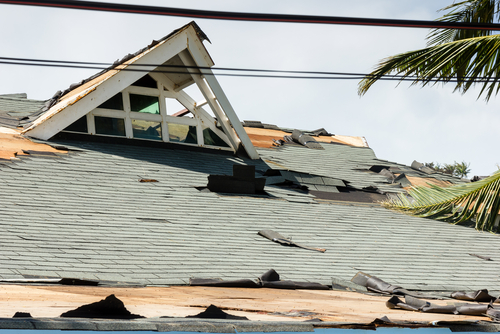How to File an Insurance Claim for Storm Damage Repairs

Storms can wreak havoc on our homes, causing significant damage that may require costly repairs. Fortunately, having a comprehensive homeowners insurance policy can provide financial protection when we find ourselves facing the aftermath of a storm. However, successfully filing an insurance claim for storm damage repairs can be a complex process. In this blog, we will walk you through the necessary steps to ensure you receive the compensation you deserve.
Documenting the Storm Damage
The first and most crucial step in filing an insurance claim for storm damage repairs is to document the extent of the damage thoroughly. As soon as it is safe to do so, take pictures and videos of the affected areas from a variety of angles. Include both wide shots and close-ups to capture the full scale of the damage. Additionally, make a detailed list of the damaged items, including their approximate value. This documentation will serve as crucial evidence when negotiating your insurance claim.
Contacting Your Insurance Company
After the storm has passed and you have documented the damage, the next step is to contact your insurance company. Report the claim as soon as possible, as most insurance policies have a time limit for filing claims after a storm. The insurance company will then provide you with a claim number, which you should keep for reference during the claim process. Be prepared to provide detailed information about the damage, including when and how it occurred.
Temporary Repairs and Mitigation Steps
Once your claim has been filed, it’s important to take immediate action to prevent further damage. This includes arranging for temporary repairs and taking mitigation steps. For example, if your roof has been damaged and is allowing water to enter your home, it is crucial to hire a professional to tarp it as soon as possible. Similarly, if there are broken windows, make sure to board them up promptly. Keep all receipts and records of these temporary repairs and mitigation steps, as they can be reimbursed as part of your claim.
Meet with the Insurance Adjuster
After filing your claim, your insurance company will assign an adjuster to assess the damage and determine the value of your claim. The adjuster will contact you to schedule an appointment, where they will inspect the damage and collect any additional information required. Be sure to be present during this inspection and provide them with all the relevant documentation, including the pictures, videos, and the list of damaged items you previously prepared.
Obtaining Repair Estimates
Obtaining repair estimates from licensed contractors is an essential step in the claim process. Contact reputable restoration contractors to assess the damage and provide detailed written estimates for the repairs. Make sure the estimates include the cost of materials, labor, and any additional expenses that may be required, such as permits or inspections. Submit these estimates to your insurance company promptly for review.
Reviewing Your Insurance Policy
While your claim is being processed, it’s worth reviewing your insurance policy to understand the exact coverage you have. Pay close attention to any deductible amounts, coverage limits, and exclusions that may affect your claim payout. If you have any questions or concerns, reach out to your insurance agent or company directly for clarification.
Negotiating the Settlement
Once your insurance company has reviewed your claim and estimates, they will make a settlement offer. Carefully review the offer and compare it to the estimates provided by the contractors. If you believe the offer is low or unfair, don’t be afraid to negotiate with your insurance company. Provide them with any additional evidence, such as quotes from alternative contractors or testimonials from friends and neighbors who faced similar storm damage repairs. Keep all communication in writing and always maintain a polite and professional tone throughout the negotiation process.
Finishing the Repairs
Upon reaching an acceptable and fair settlement, you can move forward with the necessary repairs. Make sure to hire reputable contractors and keep all records of the repairs, including receipts and invoices. Even after the repairs are complete, keep an eye out for any hidden damages that may not have been initially visible and report them to your insurance company promptly.
Summary
Filing an insurance claim for storm damage repairs can be a challenging task, but with proper documentation, timely communication with your insurance company, and careful negotiation, you can ensure a fair settlement. By following the steps outlined in this blog, you will be well-equipped to navigate the claims process and receive the compensation needed to restore your home after a storm. Remember, always consult your insurance policy and seek professional advice if you have any doubts or concerns.




